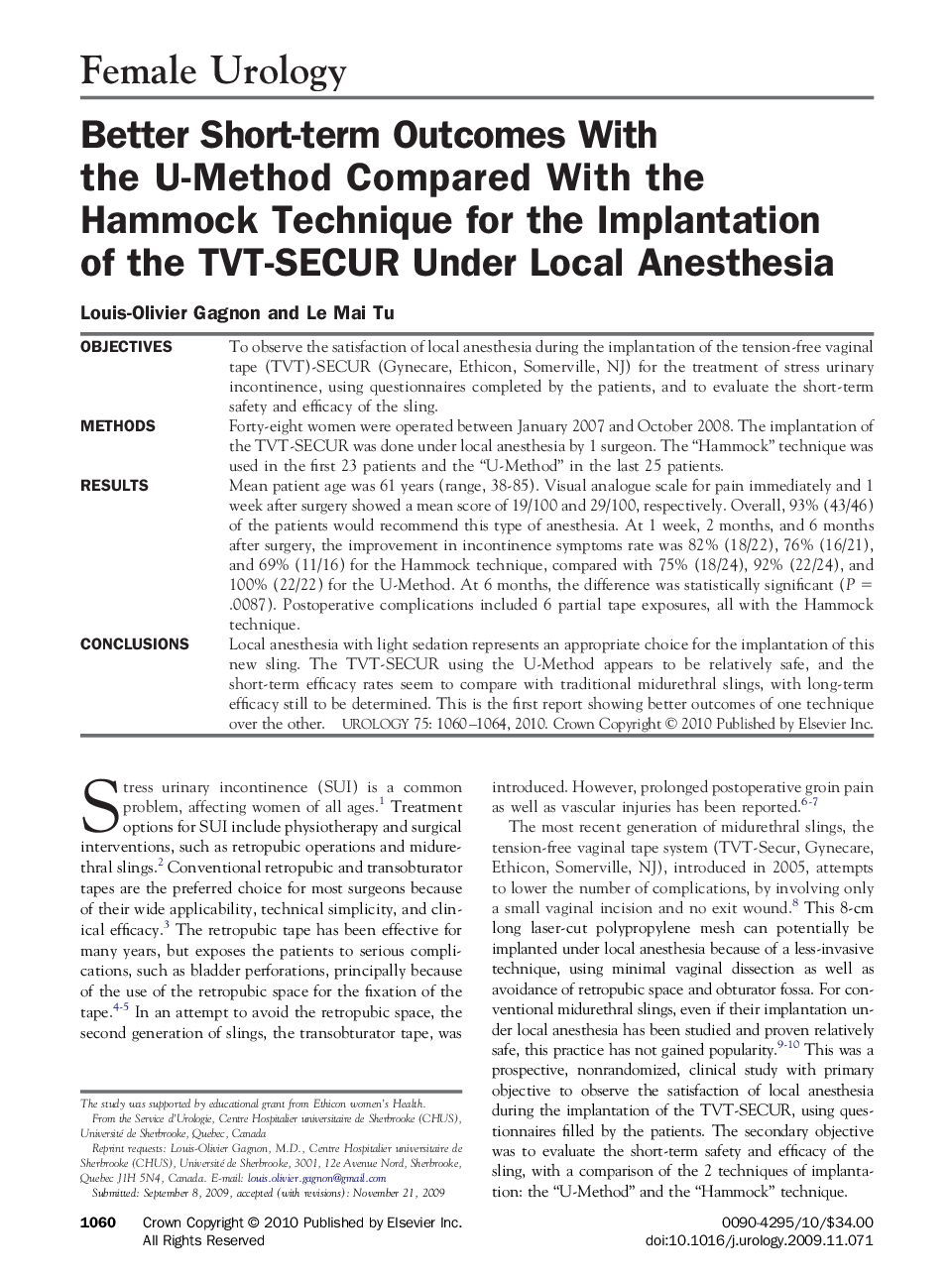| Article ID | Journal | Published Year | Pages | File Type |
|---|---|---|---|---|
| 3901574 | Urology | 2010 | 5 Pages |
ObjectivesTo observe the satisfaction of local anesthesia during the implantation of the tension-free vaginal tape (TVT)-SECUR (Gynecare, Ethicon, Somerville, NJ) for the treatment of stress urinary incontinence, using questionnaires completed by the patients, and to evaluate the short-term safety and efficacy of the sling.MethodsForty-eight women were operated between January 2007 and October 2008. The implantation of the TVT-SECUR was done under local anesthesia by 1 surgeon. The “Hammock” technique was used in the first 23 patients and the “U-Method” in the last 25 patients.ResultsMean patient age was 61 years (range, 38-85). Visual analogue scale for pain immediately and 1 week after surgery showed a mean score of 19/100 and 29/100, respectively. Overall, 93% (43/46) of the patients would recommend this type of anesthesia. At 1 week, 2 months, and 6 months after surgery, the improvement in incontinence symptoms rate was 82% (18/22), 76% (16/21), and 69% (11/16) for the Hammock technique, compared with 75% (18/24), 92% (22/24), and 100% (22/22) for the U-Method. At 6 months, the difference was statistically significant (P = .0087). Postoperative complications included 6 partial tape exposures, all with the Hammock technique.ConclusionsLocal anesthesia with light sedation represents an appropriate choice for the implantation of this new sling. The TVT-SECUR using the U-Method appears to be relatively safe, and the short-term efficacy rates seem to compare with traditional midurethral slings, with long-term efficacy still to be determined. This is the first report showing better outcomes of one technique over the other.
